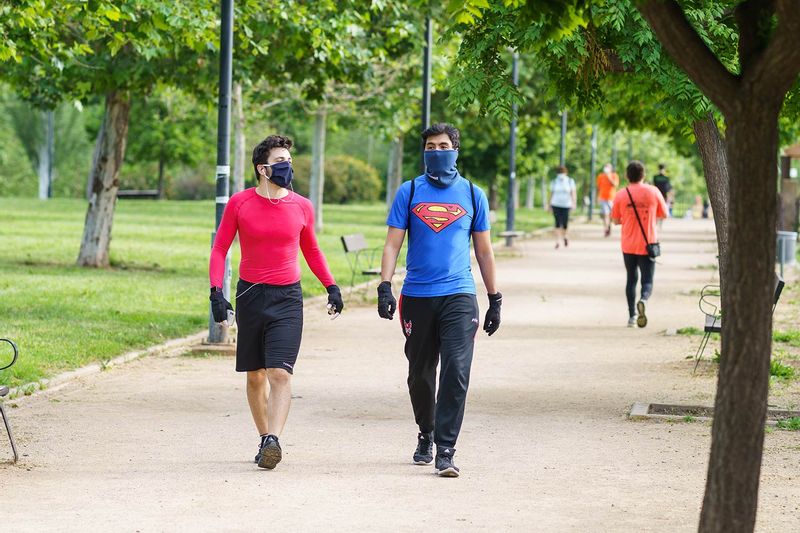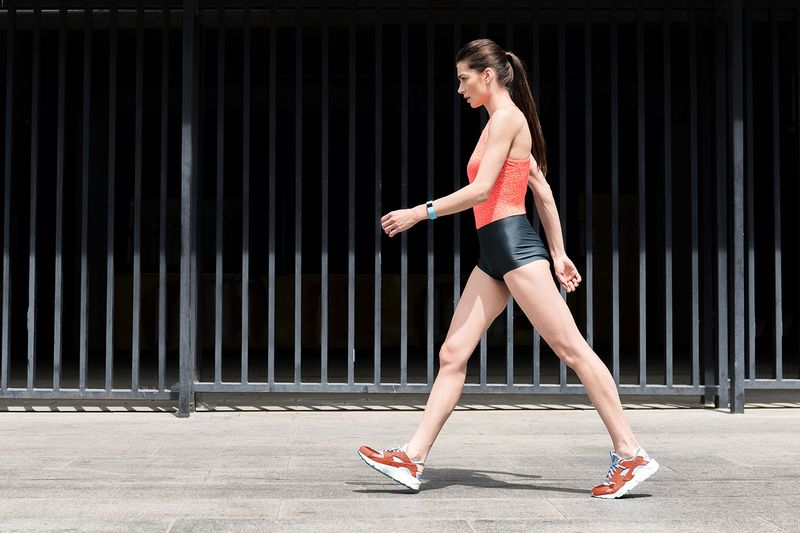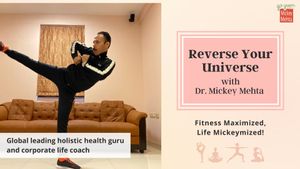Abhishek Alimchandani, a 29-year-old Mumbai-based advertising professional, believes in the power of walking. Before the pandemic hit India, it was not only his preferred way of getting from one destination to another but also an effortless way to stay active. Amid the pandemic, it became his only way to a healthy body and mind, accompanied by a balanced diet, of course! But walking was also a major factor in his fitness journey. Covering 15 to 20 thousand steps a day, which took almost two hours a day, Alimchandani lost over 30kgs in seven to eight months. What's commendable is that he didn't have to take time off his daily schedule to meet his fitness goals. He made the most of the times he was on a work call to walk at his building's terrace and sometimes, inside his home.
For Mohit Gang, founder, Moneyfront, walking has been one of the forms of fitness in his routine for the past four years. On an average, he tries to complete 12,000 steps a day, and, on a good day, he even reaches 15,000. Unlike Alimchandani, Gang also practices running, strength training and plays a game or two of tennis a few times a week. But their objective remains the same – a healthy body and mind.

Walking is also a great form of safe, low-intensity exercise – simple and effective – to maintain overall health. Plus, it’s free and requires minimal to no equipment or special training. One of the top fitness trends of 2021 across the globe, this activity first became a trend in 2007. We asked Simrun Chopra, deep health coach and founder of Nourish with Sim, Shwetambari Shetty, fitness expert at Cult.fit, and Karan Sawhney, co-founder of The Tribe India, to share their expert insights on this easy and accessible form of exercise, and what is it about walking that makes it so relevant even today.
Benefits of walking
Regular walks can improve your cardiac health, improve mood, create less load on your joints, prevent weight gain, build endurance, boost brain function, and may also reduce the risk of chronic diseases. The list of benefits is endless and eventually, it helps you lead a prolonged and healthy life. Shwetambari, who has designed a walk fitness session for Cult Fit, informs us.
An important point to note here is that the number of calories you burn per walk depends on multiple factors, including your body weight, walking speed/type of walk, duration of the walk, and the frequency of your walk workout.

Walking and nutrition go hand-in-hand
Regardless of which form of fitness you practice, it has to be combined with a calorie-deficit diet for sustaining health goals, experts mention. Walking for even 10 minutes can help build stamina and strength, but you have to eat in sync with your physical activity level to achieve and sustain that fitness goal/achievement. “Combined with good nutrition, walking can have several health benefits – from lower cholesterol levels to the strengthening of the respiratory system, and better brain function,” adds Simrun.
Is walking enough exercise?
Walking is a simple, safe and effective form of exercise. But will a walking session alone help me earn all benefits that come from exercise? Not really, point out experts. This physical activity is better than no exercise at all, but you can’t depend on walking alone for overall health. An ideal fitness routine has to be a combination of strength-type exercises like lifting weights or bodyweight exercises.
What is the ideal duration of a walk?
There isn’t an ideal duration to point out but according to Karan and Shwetambari, an average person must walk at least 20 to 30 minutes a day. Karan also stresses increasing the duration over a while to avoid plateauing. “When you practice a certain form of exercise for a particular period, your body starts getting used to that activity and duration, and you may stop seeing results. It is imperative to gradually increase the time of your workout to get the maximum benefit for your health.”
Types of walk to explore
Walking has several variants to help you achieve your goals, regardless of your age, gender, height, and fitness level. The experts share with us types of walks that one can explore - at home or outside – all you need is a good pair of walking shoes and some music (optional) and good posture. Drop your neck and shoulders, lengthen your back, ensure your head is up, and try to work your core while walking.

Leisure walking or strolling
Think of this as a recreational activity that is performed at a slow, relaxed pace. Great for beginners, leisure walking or strolling can help relieve stress and make you feel energised. Leisure walking is advisable for people with knee injuries or the risk of knee injuries because it doesn’t put as much load on them.
Brisk walking
One of the most effective forms of cardio exercise, brisk walking involves walking faster than your usual pace. It is a moderate-intensity activity and is good to get your heart rate up and challenge your body. If practised regularly it can offer health benefits such as weight-loss and better cardiovascular health.

Power walking
Power walking can be termed as an advanced version of brisk walking. When someone practices power walking, he or she alternates between power walking and brisk walking every two minutes. Weight loss and management of cholesterol levels are a couple of the benefits of power walking.
Running walking
This is usually for experienced walkers. In running walking, your hands are moving as they would during running, but your legs are brisk walking. This helps strengthen arm muscles and tone them to an extent.
Backwards and sideways walking
Walking in reverse and sideways may seem funny, but it can help strengthen muscles that usually take a backseat when you walk forward. The quads and calves, for instance. This also helps improve focus.





